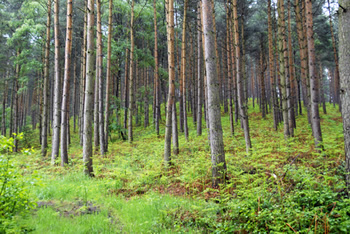Fires & the environment
These days most of us are conscious of our impact on the environment and are keen to reduce our carbon footprint.

Generally it can be said that burning wood is environmentally friendly as the carbon dioxide released during combustion balances the carbon dioxide that was absorbed during its growth. Hardwoods and softwoods share similar energy contents, but more less energy is required in hardwoods to produce the same heat.
1000 Litres of Heating Oil Corresponds to:
Approx. 5 - 6 M³ hardwood, stacked log wood
Approx. 7 - 8 M³ softwood, stacked log wood
Burning seasoned hardwood, obtained from renewable sources in an efficient, well maintained environment is considered carbon neutral.
Your fuel source should have a moisture content of less than 15 percent. This reduces the amount of smoke and vapour deposited within the chimney. Logs with a greater moisture content use more energy to dry the wood and reduce the temperature of of the flue gases, resulting in a higher level of deposits within the flue and greater risk of fire.
Our chimney sweeps are hugely knowledgeable about ideal draw and burning conditions of all combustible fuels and will always be happy to offer tips and advice on how to get the best out of your appliance and the best fuel types to use.
Another concern with older houses is the loss of heat by 'stack effect' through disused chimneys and flues. As warm air is drawn upwards and out of the chimney, colder air is sucked into the house through floorboards, windows and other small gaps.
We can help with this by capping off unused flues and fitting register plates on used flues that can be opened when you wish to light the appliance, saving money on your heating bills and reducing your impact on the environment.

